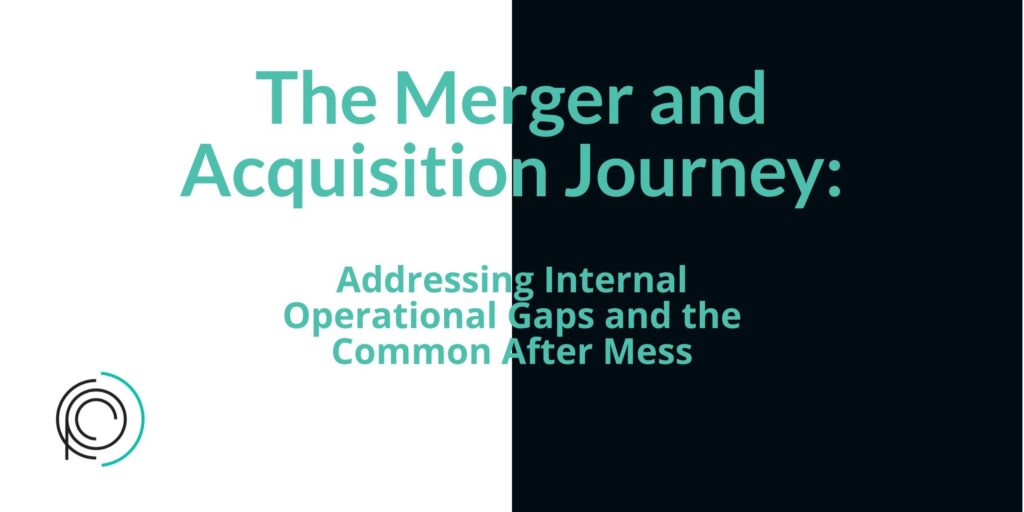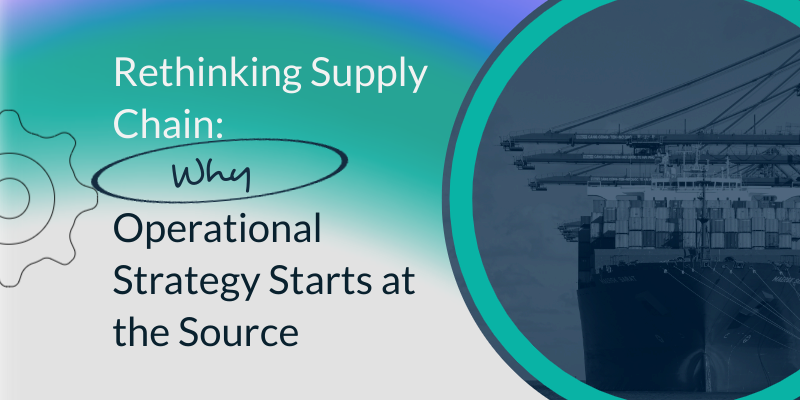The Untold Story: Aligning Operations for M&A Success
Mergers and acquisitions (M&A) are pivotal moments in the life of any organization. They often signify a new chapter of expansion, innovation, and repositioning in the market. However, the narrative doesn’t end with the signature on the acquisition agreement or the final shake on a merger deal. In fact, that’s where the real story begins—the impactful tale of two (or more) companies coming together, including the intricate challenge of aligning internal operational structures.
In this comprehensive guide, we delve into the pivotal but sometimes overlooked phase in the M&A journey: addressing the internal operational gaps that can make or break the success of a merger or acquisition. We’ll explore why these gaps are significant, how they can be identified, and the most effective strategies for bridging them.
The Necessity of Bridging Internal Gaps in M&A
M&A activities are often financially focused, with extensive pre-deal financial analysis, due diligence, and valuation. However, the operations side of organizations is equally—if not more—important for post-deal success. It’s where the operational ‘rubber’ hits the ‘strategic‘ road, and where the synergy of the new combined entity is actually realized.
Neglecting the internal operational aspect of M&A can led to integration issues, redundancies, and other challenges that significantly hamper the realization of strategic and financial goals. According to research conducted by Financier WorldWide, 50-75% of M&A deals fail to meet their objectives due to various issues, with operational misfit being a common culprit. As such, business leaders and M&A professionals must recognize the importance of addressing internal operational gaps in their strategic planning from the outset.
Understanding Mergers and Acquisitions
An M&A transaction is the coming together of two companies, often for strategic growth, increased market share, or competitive positioning. A merger occurs when two companies combine forces to create a new entity, while an acquisition involves one company purchasing another, which can result in a similar level of integration.
M&A transactions are complex and multifaceted. Beyond the financial aspects, there are strategic, legal, and operational considerations that must be carefully weighed. Since operational integration typically takes place after the deal is finalized, it is often overlooked during the initial due diligence, causing operational issues to arise post-transaction.
Common Challenges Faced in M&A
- Cultural Misalignment: Every organization has a unique culture. When companies merge, bringing two cultures together can be challenging, impacting employee morale and productivity.
- Leadership and Governance: Defining the executive structure of the new entity and establishing governance models is crucial for successful integration.
- Technology and Systems: Harmonizing different technology platforms can be a significant challenge, affecting the smooth operation of core business functions.
Identifying Operational Gaps
Before you can address operational gaps, you need to know where they lie. This requires a comprehensive assessment of the internal workings of both the acquiring and the target companies.
Conducting a Thorough Assessment
A thorough assessment should involve examining all functional areas, from finance and accounting to human resources, IT, and supply chain management. This should not only be a diagnostic exercise but also forward-looking, anticipating future operational models and requirements.
Key Areas to Focus on
- People and Processes: Understanding the organizational structure, roles, and responsibilities is essential. Process mapping can reveal overlaps and gaps in workflow.
- Technology and Infrastructure: A comparison of the IT systems, tools, and data management across organizations can highlight areas of integration and improvement.
- Legal and Regulatory Considerations: Ensuring compliance with local and international laws, especially in cross-border deals, is crucial for day-to-day operations.
Identifying these gaps early on allows organizations to develop a targeted plan for integration that minimizes disruption and maximizes efficiency.
Addressing Operational Gaps
Once the operational gaps have been identified, the next step is to develop and execute a plan for integration. This is a complex process that requires careful coordination and a comprehensive approach to change management.
Developing a Comprehensive Integration Plan
The integration plan should be detailed and actionable, with clear timelines and deliverables. It should address each operational area, detailing the steps required to align the two companies.
Aligning Processes and Systems
One of the most critical aspects of operational integration is aligning the processes and systems of the two entities. This often requires standardization or the adoption of new practices to achieve a common way of working.
Managing Cultural Differences
Mergers bring together people from different backgrounds and organizational cultures. Managing these differences through effective communication, leadership, and cultural integration programs is essential for a smooth operational transition.
Case Studies in M&A Integration
The success and failure of M&A integration efforts can often be traced back to the consideration—or lack thereof—of internal operational gaps. Examining real-world examples provides valuable insights into what works and what doesn’t.
Examples of Successful Integration
- Company A and B: Standardization Success: By using a phased approach to standardize processes across different business units, the newly formed entity improved efficiency and customer service.
- Company X and Y: Cultural Alignment: Proactive efforts to align the cultures of two merging companies led to high employee retention and a collaborative work environment.
Examples of Unsuccessful Integration
- Company C and D: Neglected Systems Integration: Failure to adequately address the integration of crucial IT systems led to significant operational disruption and customer dissatisfaction.
- Company Z and W: Overlooked Legal Compliance: The merged entity faced legal challenges and operational constraints due to a lack of clarity on regulatory requirements post-merger.
Benefits of Addressing Operational Gaps
Addressing the internal operational aspects of M&A can lead to a range of benefits that directly contribute to the success of the deal.
Improved Efficiency and Productivity
By rationalizing processes and eliminating duplicative efforts, organizations can significantly improve their operational efficiency, reducing costs and increasing productivity.
Enhanced Customer Experience
An integrated approach to operations ensures a consistent and seamless customer experience, which is critical for maintaining and growing market share.
Increased Profitability
Operational synergy can result in improved margins and better financial performance for the combined entity, making the deal more valuable in the long run.
Potential Challenges and Risks
While the benefits of addressing operational gaps in M&A are clear, there are also a number of challenges and risks associated with the integration process.
Resistance to Change
Employees may resist changes to their familiar work environments, processes, and systems. This resistance can manifest as decreased productivity and increased turnover, unless properly managed.
Time and Resource Constraints
M&A deals are often time-sensitive, and organizations may struggle to allocate the necessary resources to address operational issues in addition to other deal priorities.
Loss of Key Talent
Operational changes can lead to the departure of key employees, particularly if their roles or responsibilities are affected by the integration. Retention strategies are critical to prevent the loss of valuable expertise.
Best Practices and Strategies for M&A Integration
Navigating the operational landscape of M&A requires a strategic and thoughtful approach. Implementing the following best practices can help organizations address their internal operational gaps more effectively.
Effective Communication and Collaboration
Open and transparent communication is vital to keeping employees informed and engaged throughout the integration process. Collaboration tools and platforms can assist in uniting teams across different organizations.
Change Management Techniques
Utilizing established change management methodologies can help smooth the transition, ensuring that all stakeholders are prepared and supported throughout the integration.
Continuous Monitoring and Adjustment
An M&A integration plan is a living document that should be continuously monitored and adjusted as the transition progresses. Regular reviews can identify new gaps and ensure that the plan remains aligned with the organization’s strategic objectives.
Conclusion
Addressing the internal operational gaps in M&A is a critical component of the overall integration process. A proactive and thorough approach to operational alignment can unlock significant value for organizations embarking on the M&A journey, providing a foundation for long-term success and growth. By recognizing the importance of internal operational considerations and implementing the strategies outlined in this guide, businesses can overcome the challenges of merging two distinct entities and transform potential pitfalls into opportunities for enhancement.
For M&A professionals, executives, and operations managers, the journey of addressing internal operational gaps is a complex one—but it’s a journey well worth taking. As we’ve explored, the payoff in terms of strategic alignment, operational efficiency, and financial success can be substantial. So, next time you’re at the helm of an M&A deal, remember the operational gear shifts that will be vital for steering your company toward a successful, integrated future. What help, book a no-obligation consultation with one of our M&A experts today.







